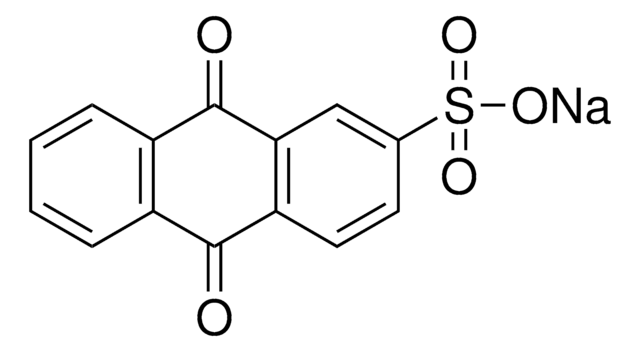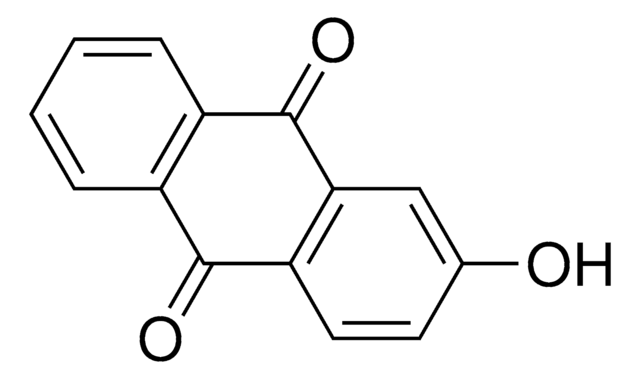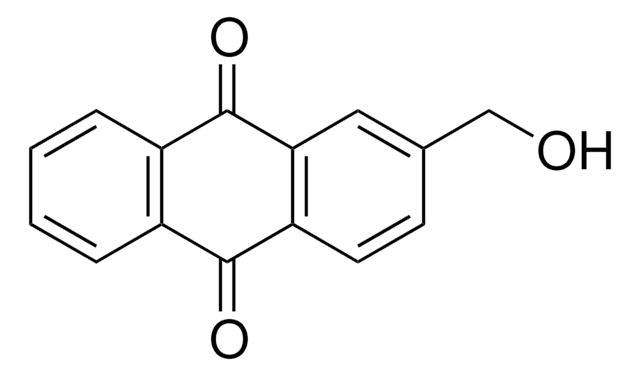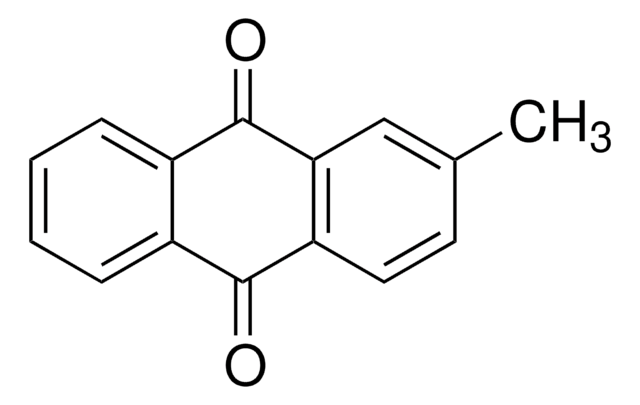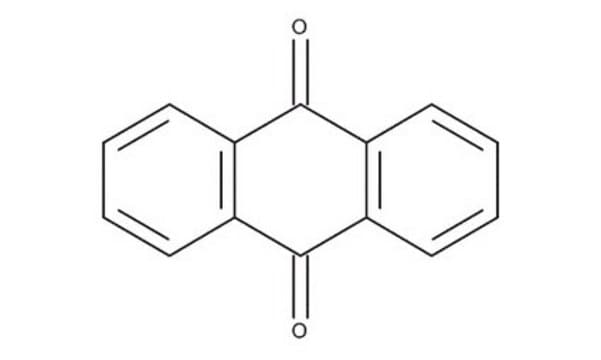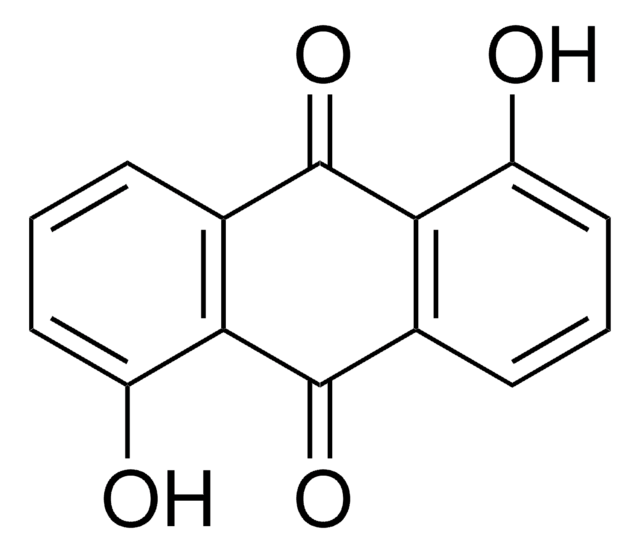252727
Anthraquinone-2-carboxylic acid
98%
Synonym(s):
9,10-Dihydro-9,10-dioxo-2-anthracenecarboxylic acid
Sign Into View Organizational & Contract Pricing
All Photos(1)
About This Item
Empirical Formula (Hill Notation):
C15H8O4
CAS Number:
Molecular Weight:
252.22
EC Number:
MDL number:
UNSPSC Code:
12352100
PubChem Substance ID:
NACRES:
NA.22
Recommended Products
Assay
98%
form
solid
mp
287-289 °C (lit.)
functional group
carboxylic acid
ketone
SMILES string
OC(=O)c1ccc2C(=O)c3ccccc3C(=O)c2c1
InChI
1S/C15H8O4/c16-13-9-3-1-2-4-10(9)14(17)12-7-8(15(18)19)5-6-11(12)13/h1-7H,(H,18,19)
InChI key
ASDLSKCKYGVMAI-UHFFFAOYSA-N
Storage Class Code
11 - Combustible Solids
WGK
WGK 3
Flash Point(F)
Not applicable
Flash Point(C)
Not applicable
Personal Protective Equipment
dust mask type N95 (US), Eyeshields, Gloves
Choose from one of the most recent versions:
Already Own This Product?
Find documentation for the products that you have recently purchased in the Document Library.
Customers Also Viewed
S Y Tsai et al.
Journal of pharmaceutical sciences, 82(12), 1250-1254 (1993-12-01)
The physicochemical properties of 9,10-anthraquinone-2-carboxylic acid (AQCA) were investigated by thermal analysis, powder X-ray diffraction pattern, solubility, and partition coefficient. The chemical structure of AQCA was confirmed by the data from UV, Fourier transform IR (FTIR), and NMR analyses. Solubility
Coupled Proton and Electron Transfer: Adsorbed Anthraquinone-2-carboxylic Acid Monolayers.
Forster RJ.
Journal of the Electrochemical Society, 144(4), 1165-1173 (1997)
Jie Sun et al.
Analytical chemistry, 90(11), 6660-6665 (2018-05-15)
To detect the redox state evolution during wound healing process, a redox-sensitive surface-enhanced Raman scattering (SERS) probe was constructed by attaching anthraquinone as a redox-sensitive molecule onto gold nanoshells, and the redox-sensitive SERS probes were loaded on one surface of
A Bielawska et al.
Polish journal of pharmacology, 53(3), 283-287 (2002-01-12)
A series of proline analogues of anthraquinone-2-carboxylic acid (1-3) were synthesized and evaluated for cytotoxic activity in the cultured breast cancer MCF-7 cells. The concentrations of 1, 2 and 3 needed to inhibit [3H]thymidine incorporation into DNA by 50% (IC50)
H H Cheng et al.
Research communications in molecular pathology and pharmacology, 105(1-2), 97-103 (2000-06-13)
The objectives of this study are to describe the inhibitory effect of 9,10-anthraquinone 2-carboxylic acid (AQCA) on IgE-mediated passive cutaneous anaphylaxis (PCA) reaction, and the pharmacokinetics of AQCA. Pharmacodynamic assessments were performed at 0.5, 1 and 2 mg/kg (i.v.) and
Our team of scientists has experience in all areas of research including Life Science, Material Science, Chemical Synthesis, Chromatography, Analytical and many others.
Contact Technical Service


